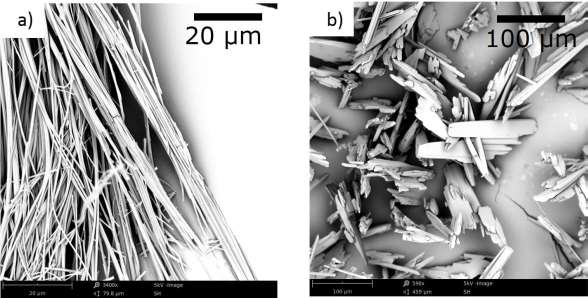Pharmaceuticals
Developing pharmaceutical co-crystals 9th May 2018
By Christopher Worrall, Technical Sales Manager, US at Johnson Matthey
Christopher Worrall, Technical Sales Manager, US, at Johnson Matthey, explains how pharmaceutical properties can be fine-tun

Christopher Worrall, Technical Sales Manager, US, at Johnson Matthey, explains how pharmaceutical properties can be fine-tuned by manipulating the drug’s solid form, focussing on the development of co-crystals in which the components are associated by non-ionic and noncovalent bonds in defined stoichiometric ratios.
A pharmaceutical’s solid form is an essential physical property that directly impacts the available methods of drug administration. It influences properties such as bioavailability and stability, both of which underpin the usability of pharmaceuticals. Bioavailability defines the proportion of the drug that enters the body’s circulation, and stability defines the ability to maintain the pharmaceutical properties following administration.
By manipulating the drug’s solid form, these pharmaceutical properties can be fine-tuned. There are two major crystalline modifications that are dominant in the pharmaceutical industry which differ depending on properties of the active pharmaceutical ingredient (API). If the API is ionizable, one could consider forming a salt – this involves a detailed screening process carried out against relevant counter-ions based on pKa. Alternatively, a co-crystal of the drug could be developed using different co-crystal components. Either solid form has its own associated advantages and both could be applied to generate appropriate pharmaceutical properties.
Since both co-crystal and salt forms affect biological properties in similar forms, regulation that distinguishes them is essential for drug manufacturing and development. To further regulate these pharmaceutical materials, in February 2018, the Food and Drug Administration (FDA) updated their guidance on the classification of co-crystal forms of APIs. Now, new drug applications (NDAs) and abbreviated NDAs (ANDAs) that incorporate co-crystals must provide additional data that support their assertion of co-crystal formulation.
For companies such as Johnson Matthey, actively involved in both facilitating and driving innovations in the pharmaceutical landscape, the FDA’s regulatory changes come as no surprise. In fact, for JM, one of the leading fine chemical providers with a wealth of experience in pharmaceutical properties and solid state sciences, the impact of these changes has been minimal due to their pre-established procedures that have quickly adapted to the new requirements that necessitate the provision of additional information.
Before descending into the regulatory details, the difference between co-crystal and salt forms must be established. Pharmaceutical co-crystals are defined as crystalline materials composed of two or more different molecules within the same crystal lattice. One component is the API and the other is known as a coformer – a non-solvent and typically non-volatile component. The principle difference between co-crystal and salt forms relates to the interactions between the two components. In co-crystals, the two components are associated by non-ionic and noncovalent bonds in defined stoichiometric ratios, this is in contrast to salts, where the components interact ionically.
In practice, different co-crystals of APIs are synthesized directly by selecting an appropriate coformer component via crystal design and engineering. Such changes can potentially improve biologically-relevant properties, making each co-crystal form potentially useful for pharmaceutical applications.
So, now let us delve into the regulatory changes further. The most impactful change relates to the definition of co-crystals as new polymorphs – crystalline forms – of the API, instead of drug product intermediates, or as a new API, which is the case for different salt forms. A quantitative measure has also been established to distinguish these two forms in cases where the API and coformer are present as ionizable forms. These forms needed further definition owing to the potential preference for salt formation over co-crystals on account of plausible ionic interactions. To be classified as a co-crystal, the API and coformer components must meet a quantitative measurement based on the pKa values of the acid and the conjugate acid of base. Differences above one indicate the increased potential of ionic bonding, making salt formation likely. In contrast, if the difference is below one, proton transfer is less likely; indicative of a co-crystal form.
But this rudimentary test is not guaranteed to always be successful, with many examples of salt and co-crystal formation outside this range. Therefore, alternative measures determining the structure must also be established. In such cases, spectroscopy tools must analyse both the API and coformer components. Fortunately, there are multiple characterization and spectroscopic techniques that can be employed to probe the underlying solid state properties. As specialists with a rich history in characterization methods, JM pride themselves on providing methodologies and expertise that assists in determining properties such as these. The definitive technique to test for these properties is single crystal X-ray diffraction, a powerful tool that explores a pharmaceutical’s crystalline structure to provide essential topological information and definitive confirmation of salt or co-crystal formation.
Ultimately, the decision to alter co-crystal regulation ensures an evidence-driven data analysis approach is taken to different co-crystals of APIs. This effectively further distinguishes co-crystal and salt forms to maintain distinguishability between different APIs.
Author:
Chris Worrall, Technical Sales Manager, US at Johnson Matthey
E: christopher.worrall@matthey.com
W: Matthey.com
Chris Worrall, Technical Sales Manager, US at Johnson Matthey
E: christopher.worrall@matthey.com
W: Matthey.com


